
Introduction
Alumina Filling Ball are spherical granular fillers made from alumina as the main raw material through processes such as molding and high-temperature sintering. They possess high mechanical strength, high temperature resistance, corrosion resistance, and good chemical stability. They are commonly used in towers and equipment in fields such as chemical engineering, metallurgy, and environmental protection. They are employed as catalyst carriers or used as fillers for gas and liquid filtration, separation, and chemical reactions to increase contact area, promote mass and heat transfer, or support catalytic active substances.
Where are alumina-filling balls used?
Chemical and petrochemical industries: They are used as fillers in various towers (such as distillation towers, absorption towers, reactors, etc.) to increase the contact area between gas and liquid and promote the process of mass transfer and heat transfer. For example, they are used to support catalysts in catalytic cracking units in petroleum refining, or as carriers to enhance reaction efficiency in chemical synthesis reactions.
Environmental and water treatment fields: They can be used as filter materials for wastewater treatment to adsorb impurities and heavy metal ions in water; they can also be used as catalyst carriers in waste gas treatment to participate in the catalytic decomposition of pollutants (such as desulfurization, denitrification reactions).
Metallurgy and refractory materials: In high-temperature smelting environments (such as blast furnaces, furnaces), they are used as high-temperature resistant fillers to resist high-temperature erosion, and are also used in the preparation of refractory materials to enhance the heat resistance and mechanical strength of the materials.
Catalyst carrier application: Due to their stable surface properties and moderate specific surface area, they are often used as support carriers for catalysts, loading active components (such as precious metals, metal oxides, etc.) to be used in various catalytic reactions (such as hydrogenation, dehydrogenation, oxidation, etc.).
Gas purification and drying: In gas purification devices, they are used to adsorb moisture and harmful impurities in the gas, or as fillers to optimize the gas flow state and improve the purification efficiency, commonly used in air separation, natural gas treatment, etc.
Other industrial scenarios: For example, in ceramic manufacturing, they are used as grinding media, or in high-temperature sintering furnaces in the electronics industry as supporting fillers to ensure the stable processing of components at high temperatures.

Specification of alumina-filled balls
φ1.0 – 2.0 mm, φ3mm, φ6mm, φ8mm, φ10mm, φ13mm, φ15mm, φ20mm, φ25mm, φ30mm, φ40mm, φ50mm and other specifications can be customized for production.
HS code related to inert alumina filling balls:
6903200090 Alumina ceramic ball
6909110090 Alumina ceramic ball
6903900090 Inert alumina ball
6914100000 Alumina corundum ceramic ball
6914900000 Alumina ceramic ball mill
6903900090 Alumina ceramic ball mill
6914100000 Inert alumina Raschig ring
6914900000 Ceramic ball
Physical composition:
| Item | Value |
| Water absorption (%) | <0.5 |
| Bulk density (g/cm3) | 1.35-1.4 |
| Specific gravity (g/cm3) | 2.3-2.4 |
| Free volume (%) | 40 |
| Operation temp.(max) (ºC) | 1100 |
| Moh’s hardness (scale) | >6.5 |
| Acid resistance (%) | >99.6 |
| Alkali resistance (%) | >85 |

Detection items for alumina-filled balls:
Alumina content: Usually, chemical analysis methods such as acid-base titration and complexometric titration are adopted to accurately determine the alumina content in alumina-filled balls.
Impurity content: The content restrictions of impurities such as silicon dioxide, iron oxide, sodium oxide, etc.
Shape: The alumina-filled balls should be as regular spherical as possible, and the higher the sphericality, the better, to ensure their fluidity and uniformity during filling and use.
Surface quality: The surface should be smooth, without obvious cracks, holes, impurities, etc.
Compressive strength: By applying pressure to individual or a certain number of alumina-filled balls using a compressive strength testing machine, the maximum pressure value that they can withstand is measured.
In actual production and application, the quality detection of alumina-filled balls needs to be carried out in accordance with relevant national standards, industry standards, and enterprise internal standards to ensure that the product quality meets the requirements of different application fields.
Application of Alumina-filled Balls
Supporting catalyst bed: In fixed-bed reactors, alumina-filled balls can be used as the supporting layer located at the bottom of the catalyst bed, bearing the weight of the catalyst and keeping the catalyst bed uniform and stable. This prevents catalyst particles from sinking or moving due to gravity, ensuring uniform flow of the reaction stream through the catalyst bed and improving the consistency and controllability of the reaction.
Improving fluid distribution: As a filling material in the reactor, alumina-filled balls can improve the fluid distribution of reaction materials within the reactor. Their irregular shapes and packing methods can form a uniform flow field in the reactor, avoiding situations where the local flow velocity is too high or too low, thereby enhancing the contact efficiency of reaction materials with the catalyst and ensuring more complete reactions. This reduces reaction dead corners and off-center flow phenomena, thereby improving the overall performance of the reactor.
Adsorption and Separation
Desulfurization and Denitrification: Alumina-filled balls have certain adsorption capabilities for sulfur-containing and nitrogen-containing compounds produced in petrochemical processes. For example, in the flue gas treatment of catalytic cracking units, they can be used to adsorb sulfur dioxide and nitrogen oxides in the flue gas, reducing harmful gas emissions and protecting the environment.
Dehydration and Drying: Due to their strong hydrophilicity, alumina can adsorb moisture in petrochemical products and is often used in the dehydration and drying process of petroleum products. For instance, in the post-treatment of reformate gasoline, the adsorption effect of alumina-filled balls can reduce the moisture content of the oil products to meet the required indicators, preventing moisture from adversely affecting subsequent processing and product quality.
Aromatics Separation: In aromatics extraction and other processes, alumina-filled balls can be used as adsorbents, utilizing their differences in adsorption of various aromatic molecules to achieve separation of aromatics from non-aromatics and among different aromatics, thereby improving the purity and quality of aromatics products.


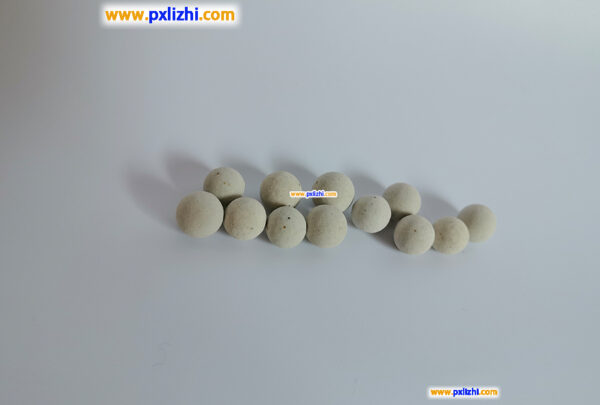
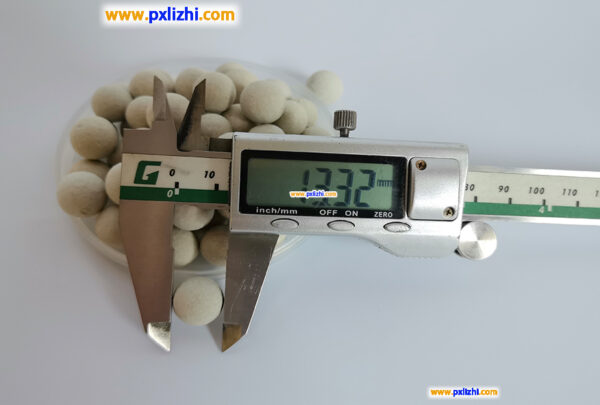
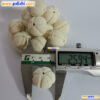
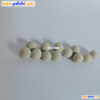
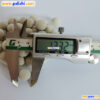
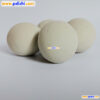
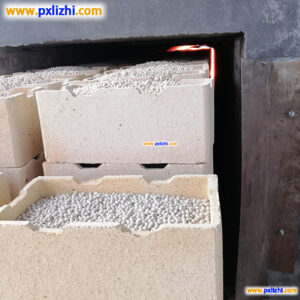
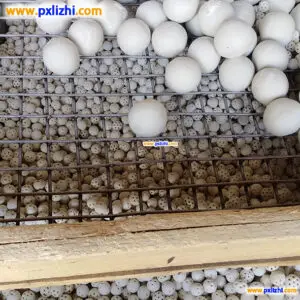
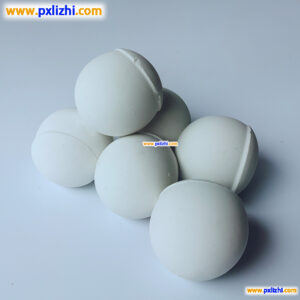

Reviews
There are no reviews yet.